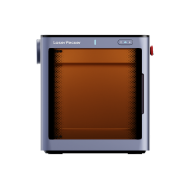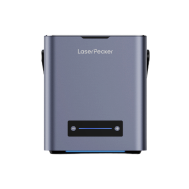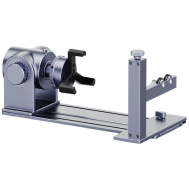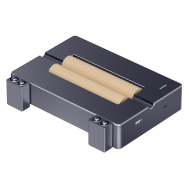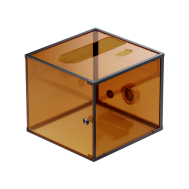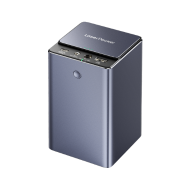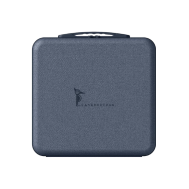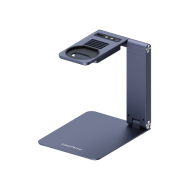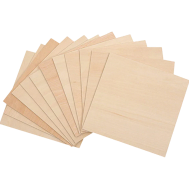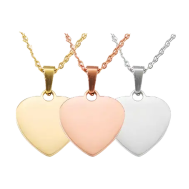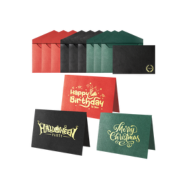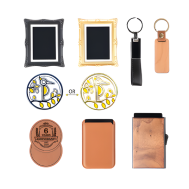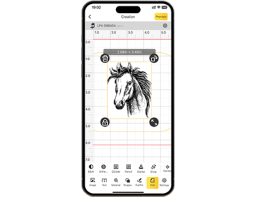Jewelry engraving adds a personal touch that transforms a beautiful piece into something truly meaningful. Whether it's a name, date, initials, or a custom message, engraving lets you leave a lasting mark—literally. From DIY approaches to professional techniques, there are many ways to engrave different types of jewelry, including rings, bracelets, pendants, and more.
In this guide, we'll walk you through six effective methods to engrave jewelry. Whether you're a beginner or a small business owner, you'll find a method that fits your needs and budget.

In this article:
- Method 1: Engrave Jewelry with a Fiber Laser Engraver
- Method 2: Engrave Jewelry with Rotary Tool
- Method 3: Engrave Jewelry with Chisel and Hammer
- Method 4: Engrave Jewelry via Stamping
- Method 5: Engrave Jewelry with a Jewelry CNC Machine
- Method 6: Engrave Jewelry with a Cricut Maker
Method 1: Engrave Jewelry with a Fiber Laser Engraver
Jewelry Laser engraving is achieved via a focused laser beam, which etch designs onto jewelry surfaces with high precision and speed. It is widely used for detailed patterns, text, and logos on metals and other materials.
What You'll Need for laser engraving Jewelry:
- Fiber laser engraving machine
- Jewelry pieces (metal, acrylic, wood, or leather)
- Design software (e.g., LightBurn, LaserPecker Software & App)
Step 1: Create or select a design
Use design software to prepare your engraving artwork. Ensure the design fits the jewelry size and shape.
Step 2: Prepare the jewelry
Clean the surface to remove dust, oil, or residue. Secure the jewelry piece firmly on the laser bed or rotary tool.
Step 3: Set up the laser machine
Select the correct material settings (power, speed, frequency). If engraving curved pieces, attach and configure the rotary tool.
Step 4: Preview the engraving area
Use the machine's preview function to confirm alignment and size.
Step 5: Start engraving
Run the engraving job while monitoring for accuracy and safety.Curious about how long it takes to engrave jewelry? Laser engraving is quick—it only takes a few minutes.
Step 6: Post-process
Clean the engraved area to remove debris. Apply polishing or protective coatings if needed.
Pros and Cons of Engraving on Jewelry with Fiber Laser
✔️ Pros:
High precision and detail
Fast and efficient for small to medium batches
Non-contact process (no tool wear or damage)
Works on a variety of materials
❌ Cons:
Requires expensive, specialized equipment.
Method 2: Engrave Jewelry with a Rotary Tool
This method involves using a handheld rotary tool or electric engraving pen to manually engrave designs on the jewelry. It's a flexible, budget-friendly option for beginners and hobbyists working with soft metals or non-metal materials.
What You'll Need:
- Engraving tools
- Jewelry blanks (aluminum, silver, copper, wood, acrylic, etc.)
- Clamp, vise, or non-slip mat
- Polishing cloth or fine sandpaper
Step 1: Mark Your Design
Use a pencil, stencil, or masking tape to outline your design directly onto the jewelry surface.
Step 2: Secure the Jewelry
Place the jewelry piece in a clamp, vise, or on a non-slip mat to keep it stable during engraving.
Step 3: Choose and Install the Bit
Select a fine engraving bit based on the material and level of detail, then install it securely in your tool.
Step 4: Begin Engraving
Turn on the rotary tool or pen and carefully trace your design. Use light, steady pressure and take breaks to avoid overheating or slipping.
Step 5: Clean and Finish
Once complete, brush off debris and polish the surface if needed to enhance contrast and smooth edges.
Pros and Cons of Engraving on Jewelry with Rotary Tool
✔️ Pros:
Affordable and accessible
No computer or software needed
❌ Cons:
Requires a steady hand and practice
Less precise than laser or CNC engraving
Time-consuming for complex designs
Method 3: Engrave Jewelry via Hand Engraving
This is a traditional and artistic method where the design is manually engraved on the jewelry by hand using a sharp tool and light hammer taps. It's widely valued for creating unique, handcrafted details and has been used by jewelers for centuries.
What You'll Need:
- Gravers or chisels
- Small jewelry hammer
- Engraving block or vise (to securely hold the jewelry)
- Pencil or scribe (for sketching the design)
Step 1: Sketch the Design
Draw your design directly on the jewelry using a fine pencil or scribe. Keep it simple if you're just starting.
Step 2: Secure the Jewelry
Mount the piece in an engraving block or vise to keep it completely stable while working.
Step 3: Choose the Right Graver
Pick a graver shape that suits your design (e.g., flat, round, or square tip) and make sure it's sharp.
Step 4: Begin Engraving
Hold the graver at a controlled angle and tap it gently with the hammer as you guide it along the design lines. Work slowly and carefully for consistent depth.
Step 5: Refine and Finish
Use a polishing cloth to clean the surface and remove any burrs. If needed, go over shallow lines for better visibility.
Pros and Cons of Jewelry Hand Engraving
Pros:
Truly handmade results
Works well on softer metals (silver, gold, copper, brass)
Cons:
Time-consuming, especially for detailed designs
Not ideal for production-scale work
Method 4: Engrave Jewelry via Stamping
Metal stamping uses force to impress letters, numbers, or shapes into jewelry pieces. It's ideal for simple, bold designs and personal messages—especially popular for name tags, dates, and initials.
What You'll Need:
- Metal stamps (alphabet, numbers, symbols)
- Small jewelry hammer
- Jewelry blanks (aluminum, copper, brass, silver, etc.)
- Polishing cloth
Step 1: Plan Your Layout
Use tape or a stamping guide to mark your design placement and keep letters straight.
Step 2: Position the Blank
Place the jewelry blank on a steel bench block for firm backing.
Step 3: Align the Stamp
Hold the stamp vertically and position it on the desired spot.
Step 4: Strike with Hammer
Give a solid, single strike with the hammer. Avoid hitting more than once to prevent blurring.
Step 5: Darken & Polish (Optional)
Darken the stamped area with a marker or patina solution, then wipe off the surface to reveal contrast.
Pros and Cons of Stamping on Jewelry
✔️ Pros:
Affordable and easy to learn
No electricity or complex tools required
❌ Cons:
Limited detail
Only works well on flat, soft metal
Mistakes are hard to fix
Method 5: Engrave Jewelry with a Jewelry CNC Machine
CNC (Computer Numerical Control) engraving uses a precision milling machine guided by digital design files. It's perfect for high-precision, repeatable, and detailed engraving on metal jewelry, ideal for professional use or batch production.
What You'll Need:
- Jewelry CNC engraving machine
- Computer with CAD/CAM software
- Jewelry blanks (gold, silver, stainless steel, titanium, etc.)
- Vise or clamps (to secure the jewelry)
- Polishing cloth
Step 1: Create or Import the Design
Use CAD software to design your text, logo, or pattern. Convert it into a toolpath using CAM software.
Step 2: Mount the Jewelry Piece
Secure the blank onto the machine bed using a clamp or vise to prevent movement.
Step 3: Set Up the Machine
Load the design file, choose the engraving bit, and set the spindle speed, feed rate, and depth.
Step 4: Run a Test Pass
Do a trial run on a scrap piece or air pass to confirm positioning and accuracy.
Step 5: Start Engraving
Begin the engraving process and monitor the machine during operation for safety and precision.
Step 6: Clean and Polish
Once done, remove any debris and polish the engraved area for a clean, professional finish.
Pros and Cons of Engraving on Jewelry with CNC Machine
✔️ Pros:
Extremely precise and detailed
Repeatable results — ideal for batch production
Fully automated process after setup
❌ Cons:
High upfront cost for machine and software
Setup takes time for each new design
Method 6: Engrave Jewelry with Cricut Maker
The Cricut Maker is a versatile cutting and crafting machine that can also engrave using a special engraving tip. It's great for customizing thin, flat metal jewelry pieces like tags, charms, and pendants—especially for DIY crafters.
What You'll Need:
- Cricut Maker
- StrongGrip mat
- Thin, flat metal blanks (e.g., aluminum, anodized aluminum, stainless steel)
- Painter's tape or masking tape (to secure the blank)
- Computer with Cricut Design Space software
Step 1: Design Your Artwork
Open Cricut Design Space and create or import your design. Adjust the size to fit your jewelry piece.
Step 2: Prepare the Blank
Place the metal blank on the StrongGrip mat and tape down all edges to prevent movement.
Step 3: Align and Send to Machine
Position the design precisely over the blank using the software's preview grid, then start the engraving process.
Step 4: Remove and Polish
Carefully remove the blank from the mat and tape. Wipe or polish the surface to highlight the engraved design.
Pros and Cons of Engraving on Jewelry with Cricut Maker
✔️ Pros:
User-friendly
Affordable compared to laser or CNC machines
Works with many DIY-friendly metals
❌ Cons:
Limited to thin, flat metal pieces
Not suitable for deep engraving or curved jewelry
Conclusion
Engraving jewelry can be both fun and rewarding, no matter your experience level. But if you're looking for clean, professional results with minimal effort, laser engraving is hard to beat. LaserPecker's jewelry Laser engravers offer unmatched precision, speed, and versatility—perfect for detailed designs, personalized text, or even business-level production. Whether you're making custom gifts or launching your own jewelry line, trying a laser engraver could be the smartest move to elevate your craft.
